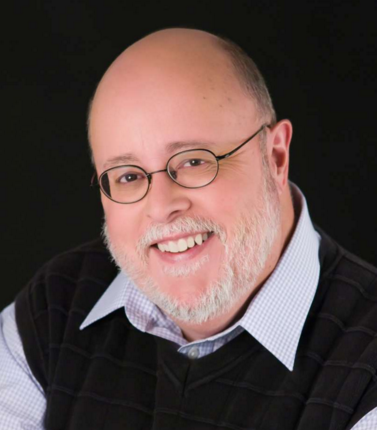Nationally, more than 400 people are killed by trains each year, most at grade-crossings where highways go over railroad tracks.

Jim Cameron
Jim Cameron
According to the Federal Railroad Administration “ the average victim is most often a 38-year-old Caucasian male under the influence of alcohol and/or drugs, with a median household income of $36,000. More than 25 percent did not graduate from high school, and 18 percent were determined to be suicides.”
In Connecticut last year the FRA says there were six deaths on the tracks, most of them involving Amtrak trains, but some by Metro-North. The question is: were they preventable?
When I started researching this story nobody wanted to talk to me. The railroads told me that writing about suicides just provoked others to take their lives, even referring me to a psychologist who has studied this issue, Dr. Scott Gabree at the Volpe National Transportation Systems Center. He also tried to dissuade me from writing about this. The less people wanted to talk, the more interested I became.
But my focus here is not on those trying to take their own lives, but those who die by accident or out of ignorance.
Last month there were two such deaths in as many days, one in Port Chester and the other near Fairfield. The results of the investigations into the deaths have not been released, but the victims are described as “trespassers”. They were on foot, near the tracks, not in a car.
There are no grade crossings on Metro-North’s main line between Grand Central and New Haven, though the New Canaan, Danbury and Waterbury branch lines have 53 such crossings, most equipped with gates and lights. In all, Connecticut has more than 600 grade crossings, most of them rarely used by trains.
But on Metro-North’s Harlem branch, a deadly collision in February 2015 took the life of a distracted driver stopped on the tracks and five others on the train that hit her car, killed by the resulting fire. The NTSB blamed that auto driver, not the railroad, for the deaths.
After the Valhalla, N.Y. crash, deadliest in Metro-North’s history, the railroad started its own education effort: TRACKS, or Together Railroads and Communities Keeping Safe. They’re also working on preventing suicides with a phone hotline.
Working with the nation’s railroads, the Washington D.C.-based “Operation Lifesaver” tries to educate everyone about the dangers of getting in the way of trains, in your car or on foot. With slogans like “Train time is anytime” and “Stand clear, Stand here” their PSA’s warn people that trains can be deadly.
In each state, local coordinators for “Operation Lifesaver” use grants for public education, including posters, PSA’s, brochures and such, in English and Spanish. But the Connecticut DOT has not applied for, nor received, any “Operation Lifesaver” money in the past two years.
The CDOT tells me they are spending $2 million a year to improve grade crossing safety and that the lapse in Operation Lifesaver grant requests was due to a change in personnel. Still, the state left a lot of needed money on the table.
Without education, the soon-to-open New Haven to Hartford commuter line will mean more trains and more danger at that line’s 25 grade crossings. The message is simple: Stay off the tracks!
Jim Cameron on Trains
- Pay Your Fare Even When the Conductor Doesn’t Ask — or You’re Shoplifting (Dec. 4, 2016)
- Trains Slip Sliding on Wet Leaf Goo is a Bigger Mess Than You May Think (Nov. 26, 2016)
- Staying Safe on the Train (Nov. 19, 2016)
- The Billion Dollar Bridge (Nov. 17, 2016)
- Politicians and Promises (Nov. 15, 2016)
- Metro-North Hasn’t Enforced Quiet Car Rules, But They’re Expanding Quiet Cars (Dec. 30)
- How a 10% ConnDOT Cut Would Affect Connecticut: Cameron on Transportation (Jan. 10)
- Predictions for Planes, Trains & Automobile Traffic in 2017: Cameron on Transportation (Jan. 14)
- CT’s Problem with Turning Commuter Drivers into Train Riders Is Lack of Station Parking: Cameron on Transportation (Feb. 10)
- Metro-North Could Learn a Lot from Amtrak: Cameron on Transportation (Feb. 24)
- A Train Station in East Bridgeport Would Be a $300M Waste of Money: Cameron on Transportation (March 3)
- Where the Good News Is for New Haven Line Commuters: Cameron on Transportation (March 9)
- ConnDOT Commissioner on Changes to CT Rails: Cameron on Transportation (April 28)
- Lower Fares Won’t Attract People to Public Transit — Better Service Will: Cameron on Transportation (May 12)
- Avoid the Carnival of Errors When Replacing the Stamford Station Garage: Cameron on Transportation (May 30)
- Relocate Rail Lines Next to I-95? Wrong, Wrong, Wrong: Cameron on Transportation (Aug. 4)
- Trump Admin Cancels Plan to Test Truck Drivers, RR Engineers for Sleep Apnea: Cameron on Transportation (Aug. 27)
- Bring the Kids and See Railroad History Come Alive at Several CT Rail Museums: Cameron on Transportation (Sept. 10)
- If You’ve Never Taken a Long Distance Train, You’re Missing Out: Cameron on Transportation (Sept. 24)
_________
Jim Cameron has been a Darien resident for 25 years. He is the founder of the Commuter Action Group and also serves on the Darien RTM and as program director for Darien TV79. The opinions expressed in this column are only his own. You can reach him at CommuterActionGroup@gmail.com
Republished with permission of Hearst CT Media.

